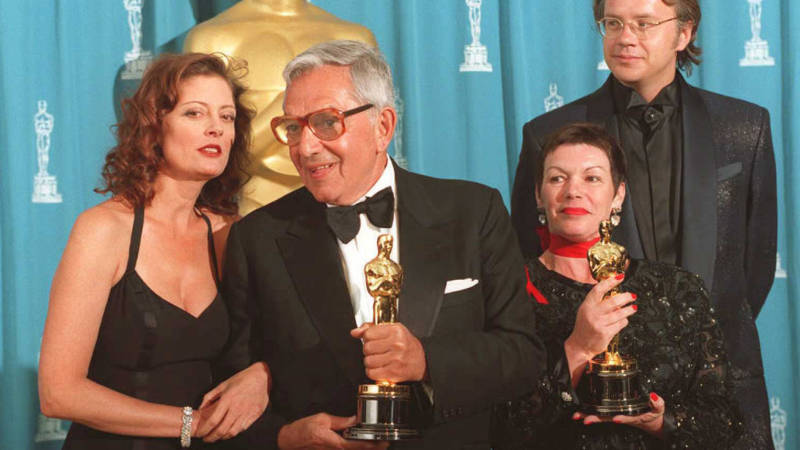In the art of production design, Adam’s work on Stanley Kubrick’s 1964 classic is widely considered among the craft’s highest achievements. His enormous, expressionistic set evoked a bomb shelter with a circular, lamp-lit table in the middle, designed to suggest a poker table. It was here where Peter Sellers famously chastised a tussling Air Force general and Russian ambassador: “Gentlemen, you can’t fight in here. This is the War Room!”
Adam was knighted in 2003, a first for a production designer.
Born Klaus Hugo Adam in 1921, Adam’s Jewish family fled Nazi Germany in 1934. They settled in London, where Adam became enraptured by German Expressionist films like The Cabinet of Dr. Caligari. He studied architecture, a background that would later prove useful for production design.
He volunteered during World War II and was one of only a handful of German-born pilots to fly for the Royal Air Force. Later, his flying experience would inspire the ejector seat of 007’s Aston Martin.
After the war, he was hired to assist veteran designer William Cameron Menzies (Gone With the Wind) on the Oscar-winning 1956 film Around the World in 80 Days. Adam caught the eye of producer Albert “Cuddy” Broccoli who, after hiring him for The Trials of Oscar Wilde, enlisted a reluctant Adam for 1962’s Dr. No, the first Bond film.
Sets created by Adam — like the interior of the British Secret Service headquarters and Dr. No’s base — created a template for the franchise that would follow. He continued to be instrumental in crafting the iconic backdrops, props and torture devices that helped define the Bond world in Goldfinger, Thunderball, You Only Live Twice, Diamonds Are Forever and” Moonraker.
While Adam’s production design on Bond allowed his fantastical imagination to roam free, working with Kubrick was a more strained process.
After Dr. Strangelove, Adam turned Kubrick down for 2001: A Space Odyssey, but he later reunited with the notoriously perfectionist director on Barry Lyndon. During shooting in Ireland, Adam was hospitalized because of the stress.
“I was incredibly close with him,” Adam told the BBC in 2013. “It was almost like an unhealthy love affair between us. And I had a breakdown eventually.”
Still, Adam won his first Oscar in 1976 for Barry Lyndon, which he shared with Vernon Dixon and Roy Walker. His second came in 1995 for The Madness of King George, which he shared with Carolyn Scott.
Other memorable inventions included the winged automobile of 1968’s Chitty Chitty Bang Bang, the gothic home of 1993’s Addams Family Values and the Cold War atmosphere of 1965’s The Ipcress File.
Adam is survived by his wife Maria Letizia, whom he married in 1952.
Copyright 2016 The Associated Press. All rights reserved.


